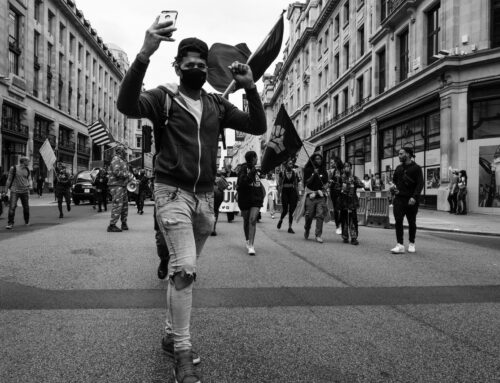Hate Crimes
It is unlikely that hate crime is on the increase, however the Police and CPS have certainly got better at understanding, identifying and prosecuting it.
In 2015/2016, there were about 15,500 hate crimes prosecuted with a staggeringly high conviction rate of almost 85%.
The CPS and Police have now agreed a position by which they will identify hate crime.
“Any criminal offence which is perceived by the victim or any other person, to be motivated by hostility or prejudice, based on a person’s disability or perceived disability; race or perceived race; or religion or perceived religion; or sexual orientation or perceived sexual orientation or a person who is transgender or perceived to be transgender.”
This does not create a criminal offence of showing hostility or prejudice to persons who identify as having the above characteristics; however where a criminal offence, such as an assault or damage to property has been motivated by hostility or prejudice, then it will be treated by the Police, CPS and if a conviction follows, the Court.
So, in a nutshell – a hate crime must be linked to a criminal offence; and is in some way concerning disability, ethnicity, gender identity, nationality, race, religion or sexual orientation.
There is an offence of stirring up racial hatred. This is committed when someone uses threatening words or behaviour or makes publications (blogs, leaflets etc), which are intended or likely to encourage hatred towards others based on ethnicity, nationality, race, religion or sexual orientation.
Stirring up racial hatred is about more than just showing hostility/hatred to one person, but about stirring up hatred against a group of people. CPS guidance and the law is clear that hate is a strong feeling and it must be an intent to stir up hatred. It must be more than somebody making objectionable comments or stirring up hostility. There is clearly a fine line between stirring up racial hatred and the right to free speech, which is why the bar is a high one for this offence to be charged.
Freedom of speech should not be ignored here. It is a right enshrined in Article 10 of the Human Rights Act 1998.
“Everyone has the right to freedom of expression. This right shall include freedom to hold opinions and to receive and impart information and ideas without interference by public authority and regardless of frontiers….”
This is not however an unrestricted right, as is made clear in Article 10(2)
“..exercise of these freedoms, since it carries with it duties and responsibilities, may be subject to such formalities, conditions, restrictions or penalties as are prescribed by law and are necessary in a democratic society, in the interests of national security, territorial integrity or public safety, for the prevention of disorder or crime, for the protection of health or morals, for the protection of the reputation or rights of others, for preventing the disclosure of information received in confidence, or for maintaining the authority and impartiality of the judiciary.”
The bar is far lower where a crime is committed and this has been motivated by hostility or prejudice. It is an accompanying, aggravating factor to the main offence. Therefore the prosecution is for the main offence committed – for example an assault, but the motivating fact is used to increase the seriousness of the charge.
So if someone is inclined to dislike or show hostility, then that remains their freedom (though of course there are various workplace protections, for example laws against discrimination which are aimed at countering this). You will not be arrested for feeling hostility towards gay people or Jewish people; however if your hostility motivates an offence against such a group, then it will be deemed to be a hate crime and this increases the sentencing powers available to the Courts.
A major challenge for the police will be how to deal with the many reports they will receive of comments on social forums and networks such as Twitter, where numerous users, emboldened by the distance between them and those to whom they target their views, make comments to often large followings of a nature clearly attaining a standard which is aimed to stir up hatred. Whilst some users are easily identified, others are less so – to what extent the police will target recourses at these offenders is unknown, but what is certain is that a racist with a smartphone can reach a far wider audience than he could on a soapbox in Hyde Park.
Contact Us
Related Blogs
Registered Office : Queen’s Chambers, 5 John Dalton St, Manchester M2 6ET | Authorised and Regulated by the Solicitors’ Regulation Authority | 3D Solicitors Ltd : Company Number 10553315 SRA Number 636106

